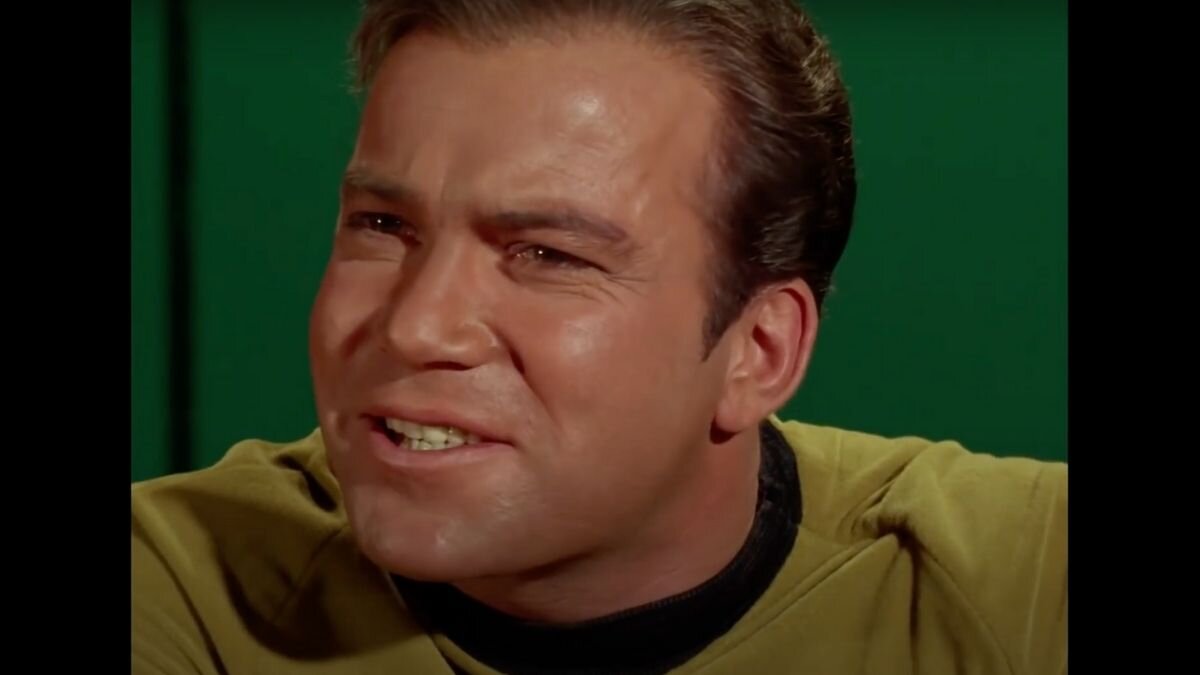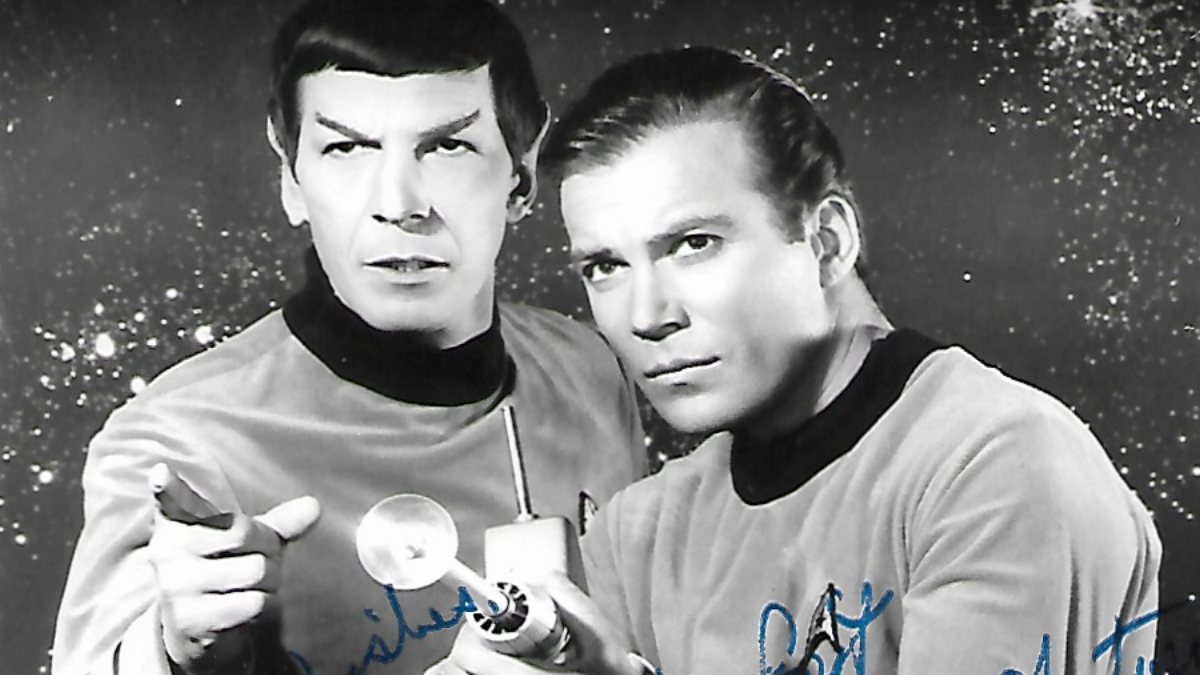Halt and Catch Fire co-showrunner Christopher Cantwell just noticed something inspiring about the timing of Star Trek’s “risk is our business” speech

William Shatner as Captain James T. Kirk giving his “risk is our business” speech in Star Trek “Return to Tomorrow”
OCTOBER 7, 2020 - Evidently, Christopher Cantwell, the co-showrunner for (among other things) the excellent AMC drama Halt and Catch Fire, is a Star Trek fan. And on Sunday, Cantwell posted a thread on Twitter that blew a few Trekkie minds.
Here’s what he said: “Permit me this geeky tangent, but I’ll make it worth your time. I stumbled upon a seemingly typical moment in Star Trek that I found emotionally resonant and quite profound when contextualized in history. It has to do with the Apollo Space Program in 1967.”
Permit me this geeky tangent, but I’ll make it worth your time. I stumbled upon a seemingly typical moment in Star Trek that I found emotionally resonant and quite profound when contextualized in history.
— Christopher Cantwell (@ifyoucantwell) October 5, 2020
It has to do with the Apollo Space Program in 1967.
He went on to explain a small piece of dialogue in the Original Series season two episode “Return to Tomorrow”. In that episode, Kirk makes his well-known “risk is our business” speech, which includes the line, “Do you wish the first Apollo mission hadn’t reached the moon?”
Cantwell pointed out that when “Return to Tomorrow” aired, on February 9th, 1968, the Apollo mission hadn’t actually reached the moon yet. That wouldn’t happen until the following year, in July of 1969. He went on to place the episode in a timeline of actual events:
Apollo 1, also known as AS-204, was planned to launch in February of 1967. It would have been the first crewed launch test of an Apollo command and service module (although it was only ever planned for low Earth orbit). Sadly, that mission never made it off the ground, and all three astronauts aboard (Gus Grissom, Ed White and Roger Chaffee) were killed in a cabin fire while on the launch pad.
According to Memory Alpha, the storyline for “Return to Tomorrow” started development in May of 1967, just three months later. It was finished in early November, around the time that Apollo 4 was launched on November 9th (noting that there was no Apollo 2 or 3). Apollo 4 was the first uncrewed test flight of the new Saturn V rocket. That flight was a success, and “Return to Tomorrow” started filming just a couple weeks later, on November 20th.
At the time that the episode was being filmed, the Apollo mission to the moon was far from a sure thing (the successful Saturn V test notwithstanding). It was an audacious move to proclaim it a success in a science fiction television show.
There was another Apollo launch just before “Return to Tomorrow” aired. In January of 1968, another unmanned mission, Apollo 5, was an orbital test flight of the lunar module. That mission was also a success.
When “Return to Tomorrow” aired in early February, audiences would have still had recent history fresh in their minds. It had been less than a year since Apollo 1 was lost, and even though the program had had two more successful unmanned missions since then, the idea of actually landing on the moon must have felt a long way off.
Cantwell, in his thread, characterized that moment: “Here Kirk is reaching back to us from the future to assure us we can still be bold, dream big, and achieve something greater than ourselves.” In actual fact, we only had to wait a year and a half for man to set foot on the moon: Apollo 11 landed safely in the Sea of Tranquillity on July 20th, 1969.
Cantwell finished his Twitter thread by saying, “It’s a call to America—and the world—not to give up hope even in the face of immense tragedy. Despite loss. It struck me as incredibly relevant when looking at the current American situation. If we don’t give up hope, our future will thank us, and continue to carry that torch. [...] Hope and television are two very powerful things.”
Please go and read the full thread for yourself; you can find Christopher Cantwell on Twitter @ifyoucantwell.
h/t to Thomas Marrone (@thomasthecat) on Twitter





